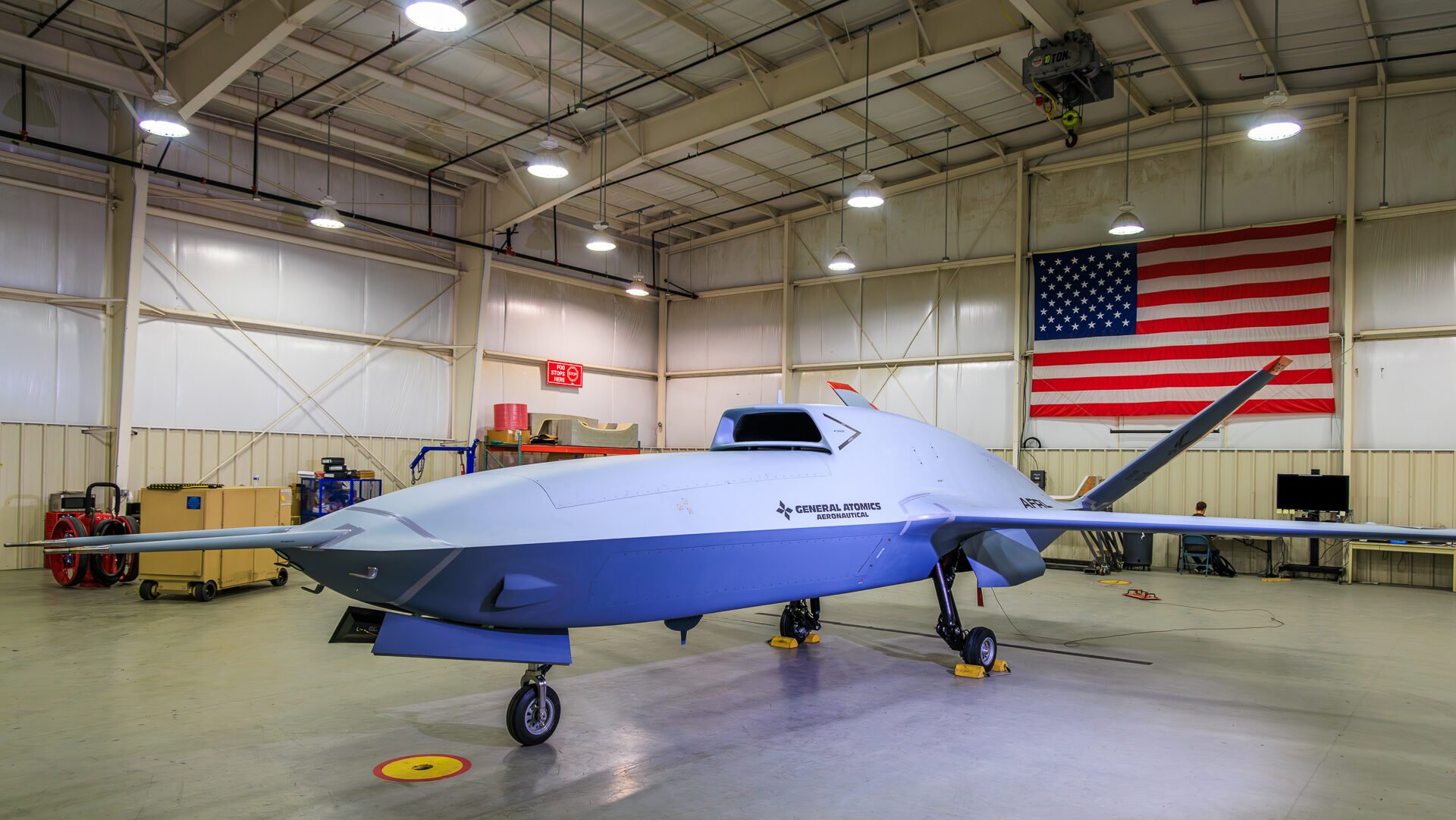
The XQ-67A on display. (GA-ASI photo)
WASHINGTON — General Atomics Aeronautical Systems (GA-ASI) has lifted the lid on its drone offering for the Air Force Research Laboratory’s Off-Board Sensing Station (OBSS) program, a new vehicle dubbed the XQ-67A that could soon be moving into flight testing.
In images and videos released by GA-ASI this week, the XQ-67A — whose design stems from the drone maker’s Gambit family of aircraft that the company is also proposing for the Air Force’s Collaborative Combat Aircraft (CCA) program — is shown conducting high-speed taxi tests in preparation for a first flight. It’s not clear if the drone has flown yet, which the Air Force previously told Breaking Defense was planned for the “first half” of fiscal year 2024.
“We think you’re looking at the future of unmanned combat air vehicles,” GA-ASI spokesman C. Mark Brinkley said in a statement Thursday. “Without getting into specifics, I can say that we are stepping through [the OBSS] program methodically and working closely with our government partners to hit all of the markers for the project and deliver on our promises. We’re focused on speed to ramp, accelerated design processes, and bringing true capability to the fight.”
Meet the future of airpower: XQ-67A.#XQ67A is the new Off-Board Sensing Station from GA-ASI and @AFResearchLab. pic.twitter.com/kXVDQrtOvP
— GA-ASI (@GenAtomics_ASI) February 8, 2024
The Air Force originally awarded GA-ASI and Kratos contracts for the OBSS program in 2021, eliminating Kratos in 2023. Few details have been publicly confirmed about the highly secretive effort, though the program is thought to be aimed at fielding an unmanned aircraft with an exquisite sensor suite that can fly ahead of fighter jets and relay back targeting data and other threat information. The XQ-67A, FlightGlobal reported, will be remotely piloted.
Besides the XQ-67A, the Air Force has been experimenting with Kratos’s XQ-58A Valkyrie. The Air Force has additionally expressed interest in using Boeing’s MQ-28 Ghost Bat for testing, which the company brought to the United States after being originally developed for Australia.
Under the separate CCA program, the Air Force envisions a fleet of drones that could act as missile trucks, serve as sensing stations, conduct electronic attack and even draw enemy fire. The drones will provide “affordable mass,” service officials have said, to compensate for the service’s aging and shrinking fighter fleet and counter numerical advantages enjoyed by China.
EXCLUSIVE: 5 companies in early running for Air Force’s CCA drone wingmen
GA-ASI is one of five companies selected by the Air Force for an early stage of the separate CCA program, Breaking Defense was first to report. The Air Force is planning to eliminate at least some of those vendors from contention by the summer, a source previously said.






















